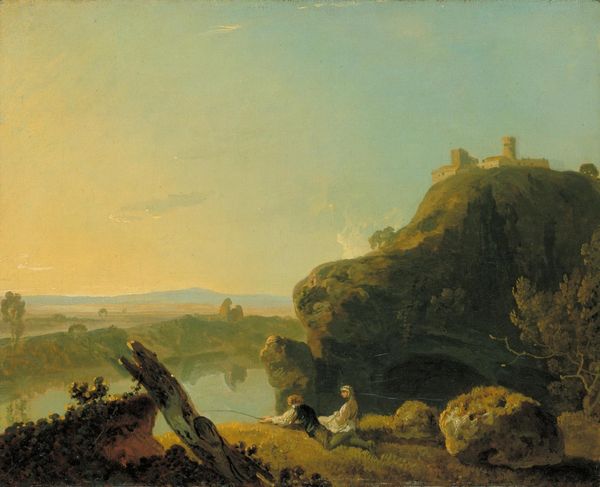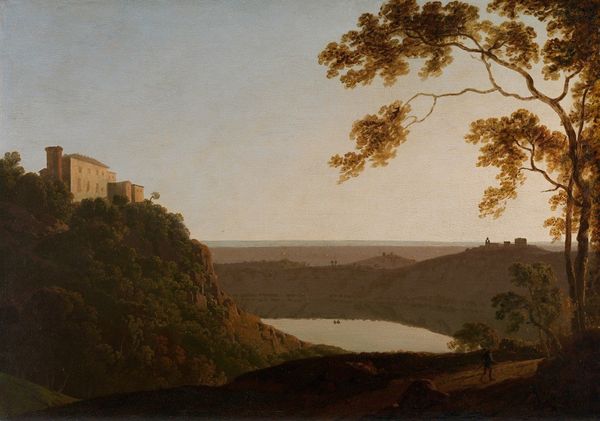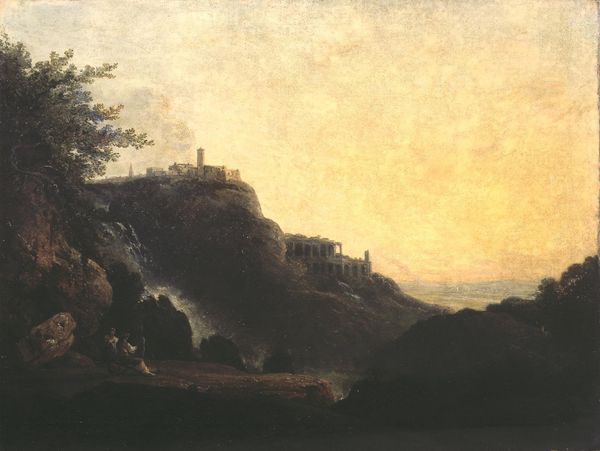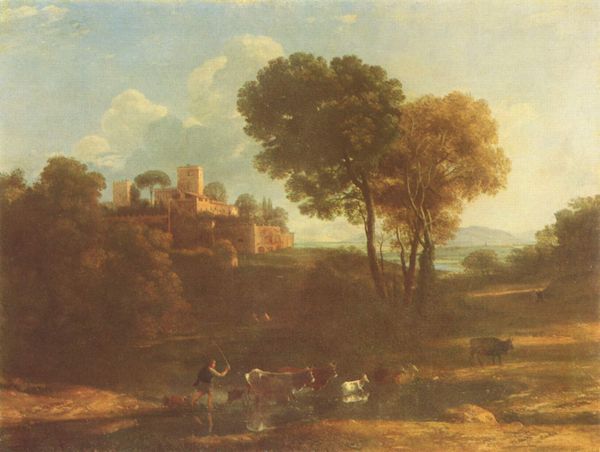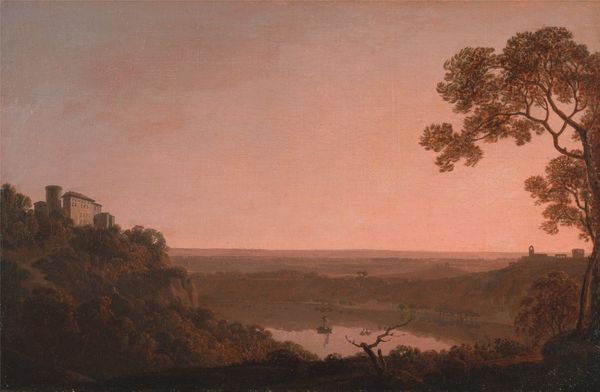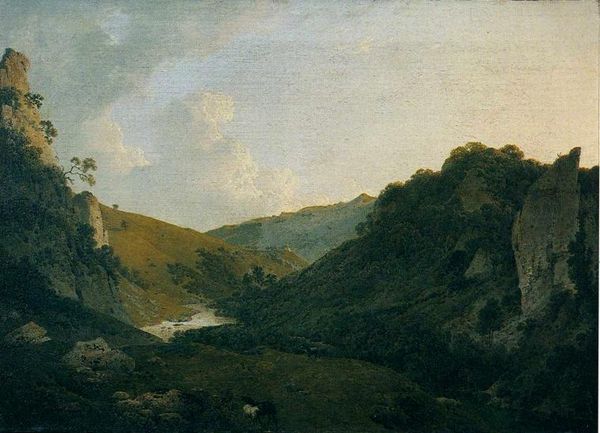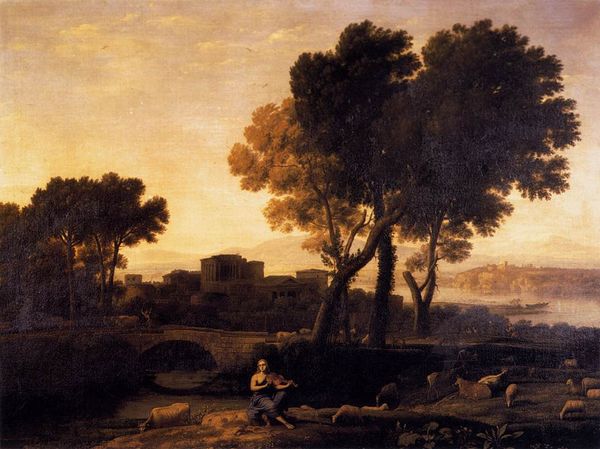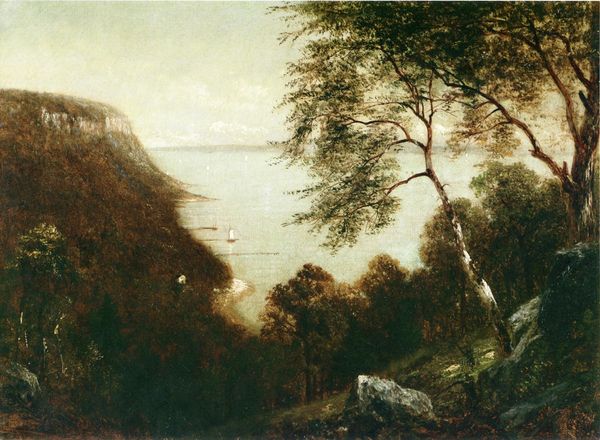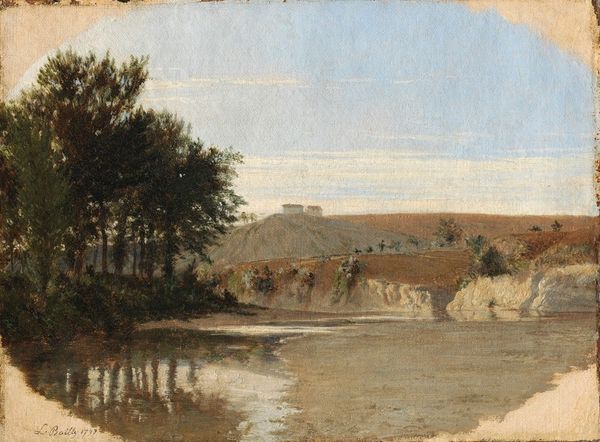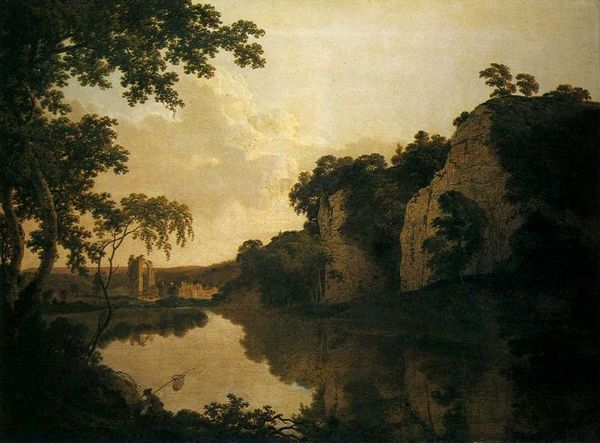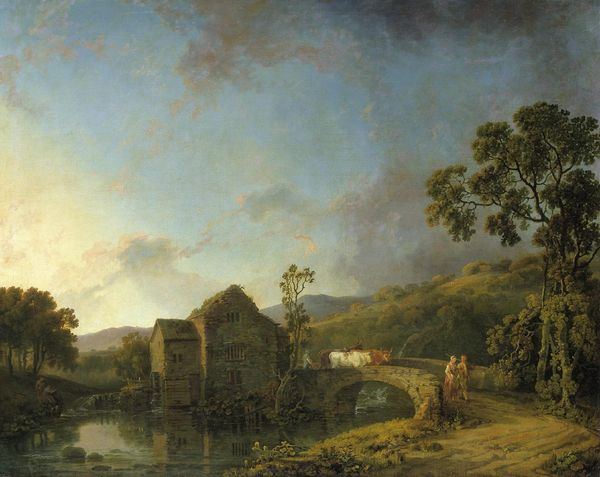
plein-air, oil-paint
#
plein-air
#
oil-paint
#
landscape
#
oil painting
#
romanticism
#
cityscape
Dimensions: 105 x 128 cm
Copyright: Public domain
Curator: Joseph Wright of Derby’s “View of the Lake of Nemi,” painted in 1795, offers us a serene, almost melancholic vista of the Italian countryside rendered in oil on canvas. What’s your immediate impression? Editor: That it's a constructed vision of pastoral calm—almost too perfect. The light seems carefully arranged, the landscape almost theatrical, but there’s an undeniable tranquility, even a slight haunting feel. Curator: Indeed. Wright was part of a larger artistic trend, of course, where landscape painting moved away from pure topographical accuracy. We see that especially with the placement of the ruins which evoke notions of classical antiquity. The architecture in relation to the peasantry at the bottom calls to the viewers how society operated during that time. Editor: Precisely. While appearing tranquil, the scene subtly upholds a social order, a visual reinforcement of power structures embedded in land ownership and legacy. Who profits from the idyllic representation is not so visible, yet the position of architectural elements clearly display dominance. Curator: And he made a few changes. In actuality, he created two slightly different versions of this scene to capture different times of the day to cater to what customers were hoping for in an artwork. The concept of a painted landscape representing idealized peace and harmony also catered to British taste, at the height of British expansionism. Editor: You’re reminding me of the problematic ways landscapes often function, creating this myth of unoccupied territory while erasing indigenous presence and legitimizing colonial ventures. This “unoccupied” view makes one consider, for instance, who does this tranquility serve, who is included, and more importantly, who is omitted? Curator: Perhaps what Wright has achieved is a visually appealing interpretation that romanticizes control in the late eighteenth century. Its tranquil beauty acts almost as a soft mask for that control. Editor: And now, I cannot view it with that same initial sense of calm but also considering the many things left out of the landscape and the purpose such omissions play. Curator: Well said. His landscapes prompt us to think about those absent histories—whose narratives weren’t captured in that moment of constructed idyllic serenity. Editor: Definitely, reflecting on this artwork allows me to think through landscape, society, and art’s active participation in power and ideology.
Comments
No comments
Be the first to comment and join the conversation on the ultimate creative platform.
